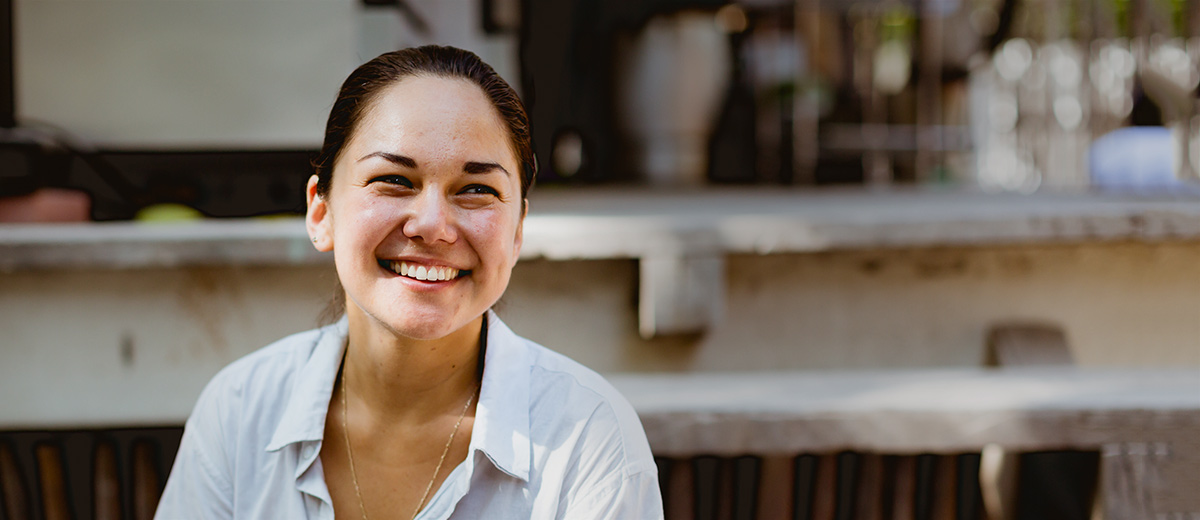On November 2016, René Redzepi dropped the news that Tulum in Mexico’s Quintana Roo would be the location for his third ever Noma pop-up. The $600 tickets sold out in a matter of three hours when they went on sale.
We were lucky to score a ticket and experience the unique immersive pop-up not just from a diner’s perspective, but also behind the scenes where the REAL magic happens – in the kitchen.
We are beyond thrilled to take you behind the scenes in our “Tales from Tulum” series, as we interview a few of the Noma Chefs and team members that made Noma Tulum happen.
Niki Nakazawa, dubbed by clients and friends as the “Queen of Mezcal”, moved to Mexico City in 2007 where she has navigated between the art, architecture, music and food worlds.
In 2012 Niki founded the experimental pop-up restaurant and catering company Pichón, as a weekly Sunday brunch pop-up experience. Over time the ongoing search for local and indigenous ingredients made Niki and Pichón a driving vehicle for others to connect and source ingredients from.
For seven years now, Niki has been a culinary “fixer” and interpreter to clients around the globe and was a consultant for the mezcal program for Noma Mexico. From curating the mezcal program along with head sommelier of Noma, Mads Kleppe, Niki takes us through the R&D it took to create the mezcal experience for the highly anticipated pop-up.
How did you get involved with a project like Noma Tulum?
During the initial research phase for Noma Mexico, I was taking a break from running my pop-up restaurant Pichón to work with my friend Chef Jair Tellez and his wife Milena Pezzi on the opening of Amaya, their natural wine bar and restaurant in Mexico City. Jair and his family are some of the only people in Mexico who have fully committed to producing natural wine and are making some delicious juice in the north of Mexico in Tecate, Baja California.
It only made sense that Mads Kleppe, the head sommelier at Noma, got in touch with Jair during one of his first visits to Mexico City. Mads came through to Amaya which is where I first met him. Anyone who has ever met Jair knows that he is this incredibly charismatic and persuasive person. He told Mads that he should hire me, the “queen of mezcal”, and with that the seed for my participation in the project was planted. Santiago Lastra, one of the project managers for Noma Mexico, called me a couple of months later to ask whether I’d be down to organize a research trip for Mads and I said yes.
How was your experience consulting for a pop-up like Noma Tulum?
I am truly impressed by Noma’s commitment to research. I feel privileged to have had the opportunity to work with people who were genuinely curious and excited by learning new things. When I came to Tulum to train the staff on mezcal along with Eduardo Angeles, an incredible mezcal producer from Oaxaca and one of my mentors, the FOH team was totally engaged and moved, it was amazing to watch.
One of the best parts of working on the selection was getting a chance to spend time with and promote so many producers and mezcal heads who I admire. It felt like we took another step in the direction of building a proper community around mezcal.

What was your process when curating the mezcal list and mezcal tasting for Noma Mexico? (Did you focus on location, geography or taste notes)
I accompanied Mads on a 10-day research and development trip for the beverage program in November, which allowed me to get a sense of his palette and preferences. For the most part we were on the same page with the kinds of flavor profiles we liked and I know that for Mads it was really important to prepare a selection that showcased the diversity of agaves and techniques found in Mexico, while also being delicious. I tried to focus on mezcals with very distinct flavors; ones that expressed the specific terroir of a mezcal-producing community or the specific flavor profile of an agave.
For example, as a part of the selection, I chose four different mezcals made with the agave marmorata (also known as Tepextate) as a way to demonstrate how terroir and the process of production can impact the flavor of a mezcal. It is one of the more distinctive mezcals, which is why I thought it could be an interesting varietal to use as a way of teaching people about the different factors that can have an impact on flavor.
I did my best to represent a broad range of mezcals from all over Mexico, but ultimately most of the selection came from Oaxaca because it is the state with largest concentration of biodiversity of agave in Mexico and also because it the state that I have spent the most time in. In this sense, Erick Rodriguez of Almamezcalera was a huge help, and filled in the gaps with incredible mezcals from producers he’s been working with for years in Puebla, San Luis Potosí, Durango, and Michoacán.
Even though you’ve been living in Mexico since 2007, did this project open your eyes to new ingredients, mezcals, traditions, pairings, etc.?
I work with a lot of chefs, writers, documentarians, and restaurateurs who come from other countries to learn about Mexican ingredients, food and technique. It’s an absolute privilege to do this kind of work. Each time I inevitably learn more about all of the unbelievable things Mexico has to offer by pursuing the questions my clients raise through their own particular cultural lens and interests.
This project gave me the opportunity to work with people who I consider some of the most important figures in mezcal today including Eduardo Angeles of La Locura, Jesus Ortiz of Archivo Maguey and Espina Roja, Erick Rodriguez of Almamezcalera, Rion Toal of Maestros del Maguey, Marco Ochoa and Silvia Philion of Mezcaloteca, Max Rosenstock of Mezcal Neta, and Raquel Monterrubio of El Tigre Mezcal. These are folks who are working to create a sustainable future for mezcal and are 100% committed to education, byproduct recycling, replanting, research and innovation in the craft. They are my friends and have taught me almost everything I know about mezcal.
 Niki Nakazawa by Jaime Fritsch | Noma Tulum
Niki Nakazawa by Jaime Fritsch | Noma Tulum
Were there any challenges?
Because of the scale and location of the project, we faced a lot of logistical challenges. Getting product to Tulum is not especially easy because there are almost no direct routes, so everything has to go through either Playa del Carmen or Cancun. One of the really impressive things about the whole Noma Mexico enterprise was the fact that they established infrastructure for small providers to get their product to Tulum despite how many challenges there was to making it happen.
What was your biggest take away?
Noma Mexico made me feel even more strongly about the importance of making time for research. The research and development stage is not only where you deepen your knowledge of a product or technique, it’s also where so many amazing, life-affirming relationships are established. Asking questions and allying yourself with the people who can teach you about what they do is everything and makes what we do so special.
What are you working on now?
I’m currently working in Arles with the Paris Pop-Up as a consultant on their pop-up bar El Chiringuito. I’m here until the end of September and will then make my way back to Mexico to continue to develop the Neta Mezcal brand along with our producers in Oaxaca. I also have plans to work with my close friend Jose Luis Hinostroza on the development of the beverage and R&D program for his restaurant Natal in Tulum.
Especially now that I am spending some time away from Mexico, I am really looking forward to going back and be a part of building something that will mean going deep into a part of Mexico I am only just beginning to discover.


